 W
WAcemya rufitibia is a species of bristle fly in the family Tachinidae. It is found in Europe.
 W
WAeshna constricta, the lance-tipped darner, is a species of darner in the dragonfly family Aeshnidae. It is found in North America.
 W
WAndricus curvator is a gall wasp which forms chemically induced leaf galls on oak trees and has both agamic and sexual generations. Agamic and sexual generations usually form two distinct galls on oak trees, but in the case of A. curvator there are six galls; the sexual generation usually on the leaf, occasionally in a twig or catkin, and the agamic generation in a bud. The wasp was first described by Theodor Hartig, a German biologist, in 1840 and is found in most of Europe.
 W
WAndricus foecundatrix is a parthenogenetic gall wasp which lays a single egg within a leaf bud, using its ovipositor, to produce a gall known as an oak artichoke gall, oak hop gall, larch-cone gall or hop strobile The gall develops as a chemically induced distortion of leaf axillary or terminal buds on pedunculate oak or sessile oak trees. The larva lives inside a smaller hard casing inside the artichoke and this is released in autumn. The asexual wasp emerges in spring and lays her eggs in the oak catkins. These develop into small oval galls which produce the sexual generation of wasps. A yew artichoke gall caused by the fly Taxomyia taxi also exists, but is unrelated to the oak-borne species. Previous names or synonyms for the species A. fecundator are A. fecundatrix, A. pilosus, A. foecundatrix, A. gemmarum, A. gemmae, A. gemmaequercus, A. gemmaecinaraeformis and A. quercusgemmae.
 W
WAndricus inflator is a species of gall-forming wasps, in the genus Andricus. The species was named by the German biologist Theodor Hartig, in 1840 and is found in Europe.
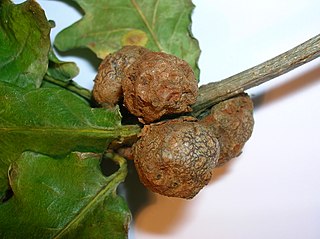 W
WCola-nut galls develop as a chemically induced distortion of leaf axillary or terminal buds on pedunculate oak or sessile oak trees, caused by the agamic gall wasp Andricus lignicola which lays single eggs within leaf buds using their ovipositor. A previous name or synonym for the species A. lignicola is A. lignicolus and A. venheurni.
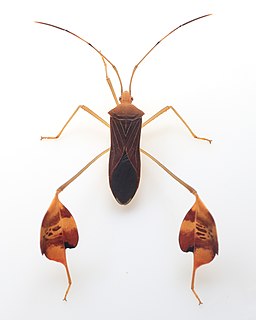 W
WAnisoscelis affinis, the flag-footed bug, is a species of leaf-footed bug in the family Coreidae. It is found in Central America and Mexico. It was first described by English entomologist John O. Westwood in 1840 as an insect found in Mexico, with no additional location information. In Introduction to Entomology, part of The Naturalist's Library by James Duncan, the species is described as similar, but distinct from, Anisoscelis hymenipherus, and native to Mexico: "A third species, undescribed, closely allied to the latter, but smaller, with the thorax and hemelytra entirely fulvous red, and the legs entirely pale ochreous, is contained in the collection of the Jardin des Plantes, and to which the specific name of affinis may be applied."
 W
WAnisoscelis hymenipherus is a species of leaf-footed bug in the family Coreidae. It occurs in South America. It was first described by English entomologist John O. Westwood in 1840.
 W
WAnthrax albofasciatus is a species of fly in the family Bombyliidae.
 W
WThe blue-fronted dancer is a species of damselfly in the family Coenagrionidae, native to parts of North America. It was first described by the American zoologist Thomas Say in 1840. It is a common species with a wide range and the International Union for Conservation of Nature has assessed its conservation status as being of "least concern".
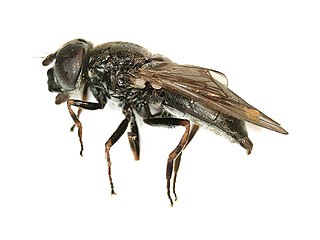 W
WCheilosia cynocephala is a Palearctic hoverfly.
 W
WCheilosia impressa is a Palearctic species of hoverfly. Like most members of its genus C. impressa is a rather small, dark insect and identification can be problematic.
 W
WChrysopilus erythrophthalmus is a Palearctic species of snipe fly in the family Rhagionidae.
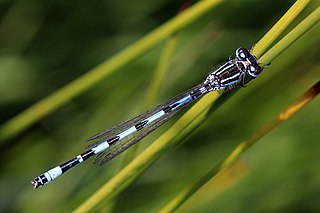 W
WCoenagrion mercuriale, the southern damselfly, is a species of damselfly in the family Coenagrionidae. It is found in Algeria, Austria, Belgium, France, Germany, Italy, Liechtenstein, Luxembourg, Morocco, the Netherlands, Portugal, Slovakia, Slovenia, Spain, Switzerland, Tunisia, and the United Kingdom. Its natural habitats are rivers and freshwater springs. It is threatened by habitat loss.
 W
WThe common darter is a dragonfly of the family Libellulidae native to Eurasia. It is one of the most common dragonflies in Europe, occurring in a wide variety of water bodies, though with a preference for breeding in still water such as ponds and lakes. In the south of its range adults are on the wing all year round.
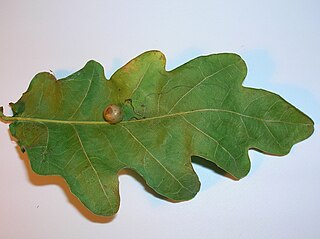 W
WThe red-pea gall or red currant gall develops as a chemically induced distortion arising from the underside of the mid-rib of a vein on Quercus species and it is attached by a short stalk or peduncle. The red-wart gall is the sexual phase of the same species.
 W
WThe nettle pouch gall develops in leaf veins, leaf petioles, flower stalks and sometimes the stem of Urtica dioica and Urtica urens. This structure is caused by the gall midge or gnat Dasineura urticae, also spelled Dasyneura urticae. Synonyms are Perrisia urticae and Cecidomyia urticae.
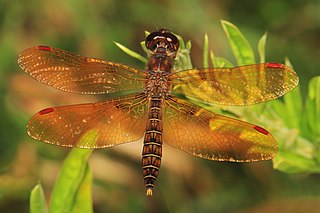 W
WThe eastern amberwing is a species of dragonfly in the family Libellulidae. It is very small, reaching a total length of no more than 25 mm. The males have orange or amber wings. Both sexes have a red pterostigma. The eastern amberwing dragonfly is one of the only types of dragonfly that actively mimics a wasp. The yellow and brown stripes on its abdomen encourage predators to stay away. When perched, they will wiggle their abdomen and wings in a wasp-like fashion to deter other animals from eating it. Males have an elaborate courtship ritual. When a female approaches his territory, the male will lead her to his selected egg-laying site and hover above it with wings whirring and abdomen raised.
 W
WEnallagma cyathigerum is a species found mainly between latitudes 40°N and 72°N; It is widely distributed in the Palearctic, and the Nearctic species Enallagma annexum was at one time considered to be synonymous with it. The species can reach a length of 32 to 35 mm. It is common in many different countries including Russia, Europe and South Korea. Damselflies are an important link between the health of the aquatic ecosystem and its response to climate change.
 W
WExoprosopa fasciata is a species of bee flies in the family Bombyliidae.
 W
WFannia mollissima is a species of fly in the family Fanniidae. It is found in the Palearctic. For identification see
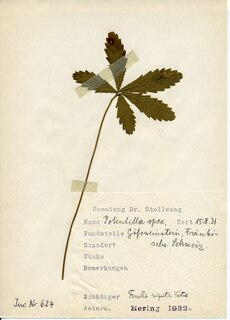 W
WFenella nigrita is a Palearctic species of sawfly.
 W
WThe goblet-marked damselfly is a medium-sized blue-and-black damselfly in the pond damselfly family (Coenagrionidae). It's a fairly common species in the South and West of Europe but is not found in the British Isles, Scandinavia and Eastern Europe. Erythromma lindenii was previously known as Coenagrion lindenii and Cercion lindenii. The goblet-marked damselfly is also known as the blue-eye. It's an easily recognized species, with its wide antehumeral stripes, narrow postocular spots, the male's very bright-blue eyes. He has very long and curved appendages, and the spear-shaped marks on S3-S6 of his abdomen.
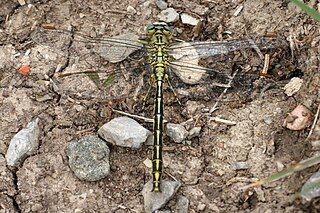 W
WGomphus pulchellus, the western clubtail, is a species of dragonfly in the family Gomphidae. It is found in Western Europe, although absent in the British isles. Its natural habitat are clean ponds and canals, clay and mud holes.
 W
WThe Irish damselfly or crescent bluet is a damselfly found in northern Europe and Asia to north-eastern China;. It is common and widespread in northern Finland, scarce and local in the Netherlands and Ireland and rare elsewhere. One of its English name comes from the fact that it is found in Ireland but not in Britain. The alternative name, crescent bluet, refers to the shape of the markings on segment two of the male and its scientific name.
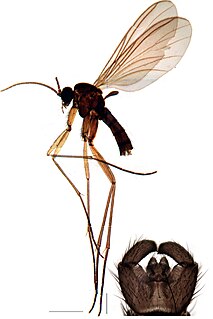 W
WLeptosciarella pilosa is a species of fly in the family Sciaridae. It is found in the Palearctic.
 W
WLestes eurinus, the amber-winged spreadwing, is a species of spreadwing in the damselfly family Lestidae. It is found in North America.
 W
WLeucorrhinia caudalis, the lilypad whiteface, is a species of dragonfly in the family Libellulidae. It is found in Austria, Belarus, Belgium, Croatia, the Czech Republic, Denmark, Estonia, Finland, France, Germany, Hungary, Latvia, Lithuania, Luxembourg, the Netherlands, Norway, Poland, Russia, Serbia and Montenegro, Slovenia, Sweden, and Ukraine. Its natural habitats are swamps and freshwater lakes. It is threatened by habitat loss.
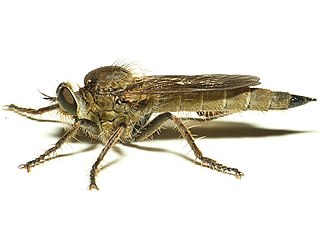 W
WMachimus arthriticus is a Palearctic species of robber fly in the family Asilidae.
 W
WMolophilus appendiculatus is a species of fly in the family Limoniidae. It is found in the Palearctic.
 W
WNehalennia speciosa is a species of damselfly in the family Coenagrionidae. It is found in Austria, Belarus, Belgium, the Czech Republic, Denmark, Estonia, Finland, Germany, Italy, Japan, North Korea, Latvia, Lithuania, Luxembourg, the Netherlands, Poland, Romania, Russia, Slovakia, Sweden, Switzerland, Ukraine, possibly France, and possibly Kazakhstan. Its natural habitats are swamps, freshwater marshes, and open excavations. It is threatened by habitat loss.
 W
WNeivamyrmex swainsonii is a species of army ant in the family Formicidae.
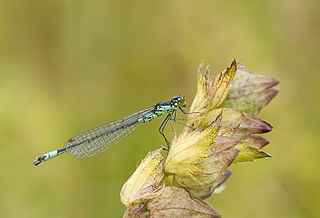 W
WNorfolk damselfly or dark bluet is a species of blue damselfly of the family Coenagrionidae. This species acquired its common name from its discovery in 1903 and presence in a very restricted area of the Norfolk Broads. Records came from Sutton, Stalham, and Hickling Broads.
 W
WThe northern emerald is a middle-sized species of dragonfly first described by Johan Wilhelm Zetterstedt in 1840. The male can be recognised by its pincer-like appendages and its narrow-waisted body. The female has distinctive orange-yellow spots on (only) the third segment of the abdomen.
 W
WOgcodes zonatus is a species of insect in the family Acroceridae, the small-headed flies.
 W
WOnychogomphus uncatus, the large pincertail or blue-eyed hook-tailed dragonfly, is a species of dragonflies belonging to the family Gomphidae.
 W
WPhyllogomphoides stigmatus, the four-striped leaftail, is a species of clubtail in the dragonfly family Gomphidae. It is found in Central America and North America.
 W
WPtilocnemus lemur is a species of feather-legged bug in the family Reduviidae native to Australia. Commonly known as the feather-legged assassin bug, it is a predator with a specialized gland called a trichome that it uses to attract and paralyse ants before feeding on them.
 W
WPyrops delessertii is a species of true bug in the family Fulgoridae, in the genus Pyrops which are sometimes called "lanternflies". This species is found in the Nilgiris and Western Ghats of southern India. The head and "snout" is greenish or brownish. The thorax has a reddish colour and there are three spots on the mesonotum.
 W
WThe red-pea gall or red currant gall develops as a chemically induced distortion arising from the underside of the mid-rib of a vein on Quercus species and it is attached by a short stalk or peduncle. The red-wart gall is the sexual phase of the same species.
 W
WThe red-veined darter or nomad is a dragonfly of the genus Sympetrum.
 W
WRhagio mystaceus, also known as the down-looker fly, downlooker snipefly and common snipe fly, is a species of fly from the family Rhagionidae.
 W
WThe small red-eyed damselfly is a member of the damselfly family Coenagrionidae. It is very similar to the red-eyed damselfly.
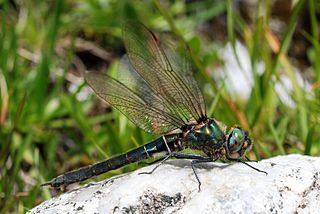 W
WSomatochlora alpestris, or the alpine emerald, is a species of dragonfly from the family Corduliidae. It is found in European highlands, southern Scandinavia, and east to southern Siberia in Asia.
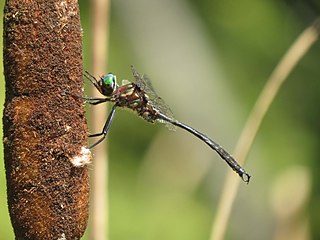 W
WSomatochlora tenebrosa, the clamp-tipped emerald, is a species of emerald dragonfly in the family Corduliidae. It is found in North America.
 W
WThyreus caeruleopunctatus, commonly known as the chequered cuckoo bee, is a parasitic bee of the genus Thyreus, also called cuckoo bees. It is a stocky bee, notable for its brilliant metallic blue and black banded colors.
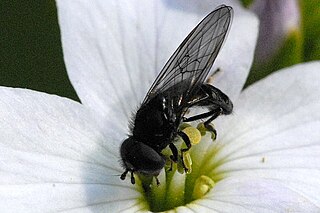 W
WTriglyphus primus is a species of hoverfly, from the family Syrphidae, in the order Diptera. The larvae seem to be host-specific to an aphid species Cryptosiphum artemisiae which creates galls on Mugwort Artemisia vulgaris.